All You Need To Know About Hair And Wigs Production
As you probably know, a wig can be made using either natural hair or synthetic fibres. Obviously wigs created with real hair have a more natural look. Real hair has a texture and luminosity; its own unique colour (never homogenous but a rich tapestry of shades); a unique movement; it is softer than manufactured fibres; and can be styled in any way you want.
By hair movement, we mean the direction that the hair takes on, and how they wave and fall across the face and shoulders. When talking about natural hair, much depends on the length and thickness of the hair: generally, the longer and thinner the hair the more movement. But what actually influences the movement of the hair the most is the state of health. Porous hair appears lifeless and opaque, chemically treated hair can appear dry or “glassy”.
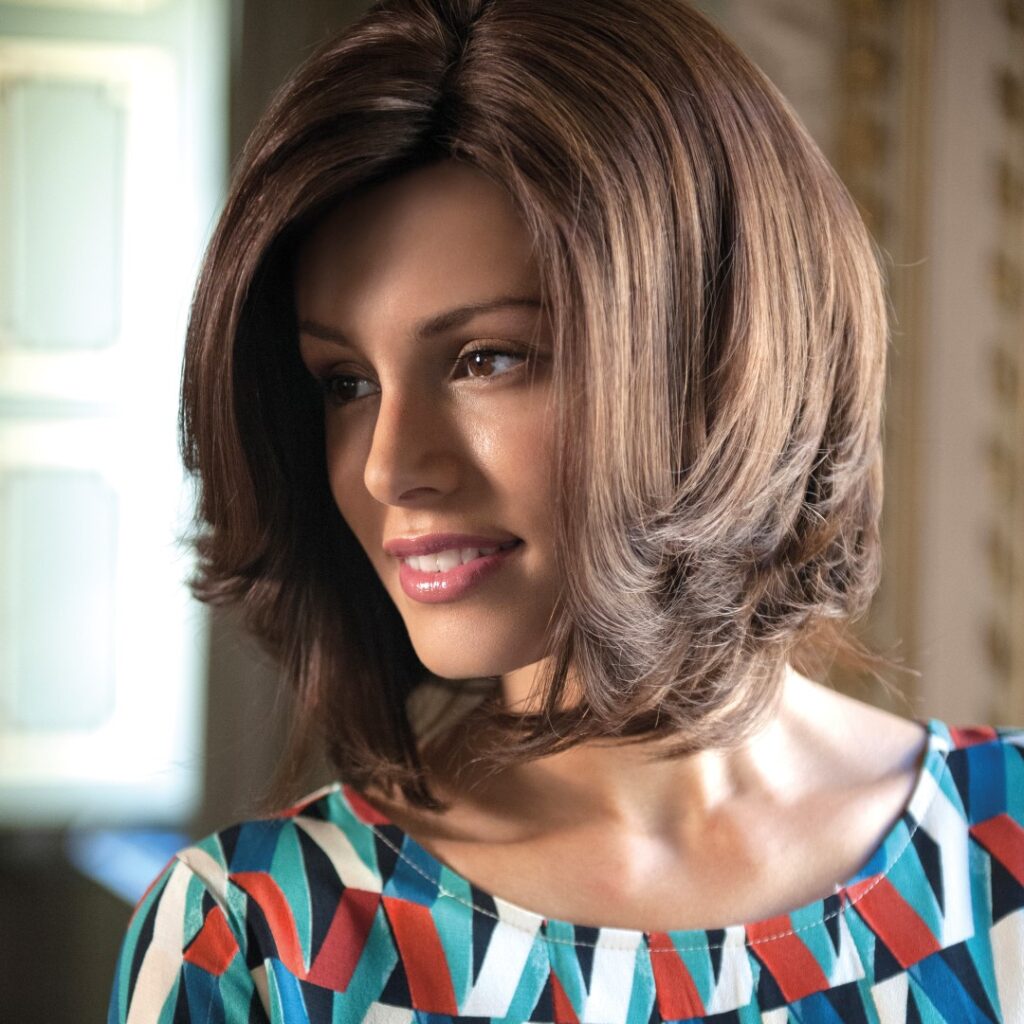
Needless to say, the condition and health of hair is extremely important in end quality of a wig.
A natural hair wig is well made when the hair is in an optimal state of health and correctly knotted in a way that creates movement and gives a natural direction to the hair, creating the effect of a full head of hair.
The type of hair used in wig production is one of the most important factors that distinguish the quality of one wig from another.
The more characteristics of natural hair that are preserved through the wig production process, the more the wig will seem like our own hair.
On today’s market, there is a wide choice of natural and synthetic wigs available, but even amongst natural hair wigs, there is a range of quality.
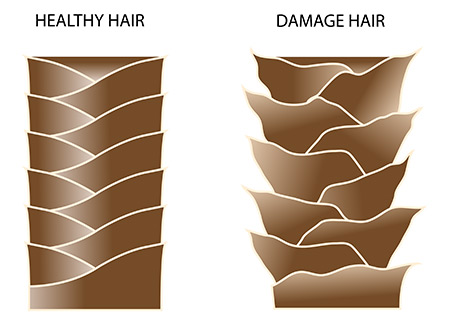
The quality of the finished product will depend on the quality of the hair used and the ability of the expert wigmaker in the crafting of the product.
Hair Structure And Characteristics
Before diving into the phases of wig production lets us reflect on the structure and features of natural hair.
The Hair Has Three Layers
If you take a cross-section of hair, you can see 3 concentric layers:
- Medulla – the internal layer is made up of the cells responsible for hair growth.
- cortex – the middle layer is made up of melanin rich cells – responsible for the hairs colour.
- cuticle – the external layer is made of overlapping flat cells that protect the hair keeping it colourful, strong and healthy.
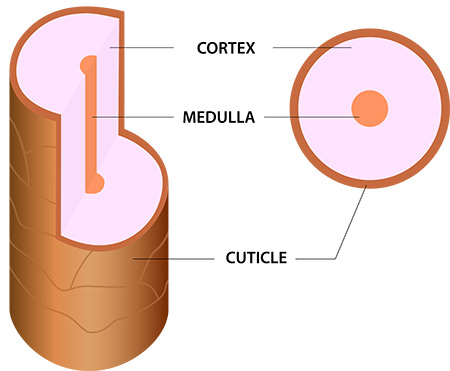
The Cuticle
The part of the hair that we can see and touch is known as the cuticle. The state of the cuticle is a key indicator to the actual health of the hair. The hair is healthy if the cuticle is healthy.
The flat cells that make up the cuticle overlap much like roofing tiles, always pointing in the same direction – with the open side pointing towards the tip of the hair.
The cells making up the cuticle (often referred to as cuticles) all lay in the same direction with the open end towards the hair tip. This particular feature of the cuticle is responsible for the shininess of our hair and allows individual hairs to slide one over the other without getting tangled and knotted.
When the cuticle is intact and healthy, our hair appears soft, shiny and elastic. On the other hand when the cuticle is damaged or consumed, the hair can appear opaque, exhausted, dehydrated and lacks elasticity
Chemical treatments such as bleaching and dyeing; excessive use of heat; and use of strong products can all cause the cuticle scales to lift off, damaging the cuticle.
The Importance of the Cuticle
So the health and beauty of our hair depends on the health of the cuticle.
True for hair, this is also true for the hair used in wig production. It is therefore important to choose wigs the use hair with an intact cuticle, especially for longer hair wig styles (30-35cm or more).
Hair used in wig production today are mostly of Indian and oriental origin. They are mainly dark hair that has been through a process of depigmentation before being coloured according to the requirements of the wig producer. But to create a natural looking wig, one must use natural, healthy, virgin hair that has never been chemically treated. If these guidelines are not followed, then the hair is not 100% healthy to start with, you risk ruining them further.
Processing Real Hair Wigs
Creating high quality wigs with real hair is a complex process. Precise quality standards must be observed in each phase of production, from sourcing of the raw material, processing of the hair through to the final packaging of the product.
Processing Real Hair Wigs
Creating high quality wigs with real hair is a complex process. Precise quality standards must be observed in each phase of production, from sourcing of the raw material, processing of the hair through to the final packaging of the product.
Sourcing Of The Hair
High quality raw materials are essential for high end wig production. We select strong, healthy hair that have never been chemically treated (hair that has never undergone bleaching or dyeing).
The hair must be Remy Hair – hair with the same direction from root to tip and intact cuticles.
During the collection phase the hair must first be tied into braids or queues to maintain the same root to tip direction (and so also maintaining the cuticles in the same direction). We then cut the braids or queues.
True Remy Hair are a minority on the market due to the strong demand and high sourcing costs.
Depigmentation
The processing continues with a careful and delicate depigmentation of the hair. The aim is to bleach the hair while keeping the cuticles intact and respecting the hair structure.
The time required varies depending on the desired end colour. For example, if you want a light blonde wig, the hair (usually dark in origin – brown or chestnut) will go through a gradual depigmentation process, which can take several days.
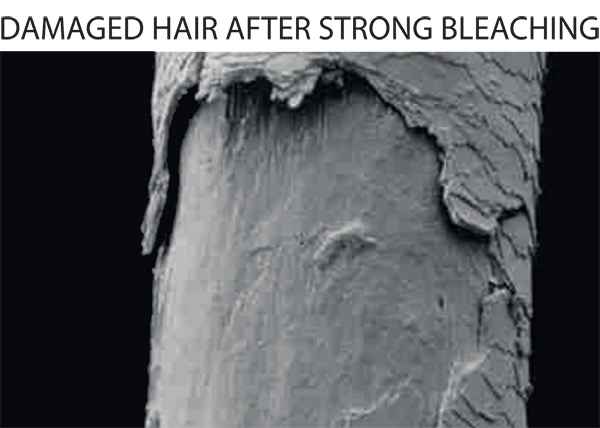
Some wig manufacturers use strong products to accelerate the depigmentation, cutting costs at the expense of the hair. Aggressive bleaching can permanently ruin hair and the hair structure, compromising their integrity. The hair can become dry with split ends, losing their natural softness and shine. They often become tangled and in extreme cases the cuticle actually lifts up and can peel off. Silicone products are often used to give temporary body, gloss and smoothness. This will be lost after the first few washes. Wigs made in such a way soon have dull, dry hair that easily tangles and knots.
Hair Dyeing Process
After depigmentation the wig is coloured – always using delicate products. The hair are divided and dyed in a variety of colours: black, brown, red, blond and all intermediate shades. We also produce shaded, darker regrowth and shatush effects.
Creation Of The Wig Styles
The raw materials are now ready for the creation of one of our wig styles.
Aside from the technical aspects, when designing each style, our stylists take into consideration the person who will wear it.
- Cap: although our wig caps are generally of medium size (54cm circumference), they have different characteristics.
Most importantly, we use high quality, hypoallergenic materials that are gentle on the skin. Covers must be lightweight, resistant and have a fair degree of elasticity. - Hair thickness: our hair experts take great care when assessing the thickness of each style (measured in how many grams of hair are used). The wig must be natural to the eye and comfortable to wear.
A wig must not be too heavy. At the same time it must recreate the effect of a natural head of hair: neither too thin nor too full. - Style: in most natural wigs hair are tied onto the cap. During this process we can give a precise direction to the hair, creating the wigs unique style. Being natural hair these can be blow dried to create movement and get the desired look.
- Hair Type: the choice of hair type in a wig depends primarily on the length of the cut. Styles with longer cut use hair with the cuticle intact or partially removed. Shorter hair styles we prefer to use partially or completely removed cuticles. Our reasons for doing this are below.
The Role Of Cuticles In Long Haired Wigs
For long-haired wigs we use Remy Hair with intact cuticles as only this type of hair can maintain the softness and body of our own hair. The cuticles are necessary as they protect longer hair – that is more exposed to stresses of everyday life than shorter hair such as blow drying and tangling with clothing. Running in the same direction, the intact cuticles will help the individual strands of hair slide over one another freely without tangles and knotting.
When a strand of hair is tied onto the wig, the section of hair that protrudes from the knot will run in the opposite direction to the rest of the hair.
In technical jargon this section of the hair is called the “return from the knot” and thus has the cuticles facing in the opposite direction to the rest. This causes tangles and knots as the opposite facing cuticles rub one anther up in the wrong way.
To remedy we remove the remainder of the hair from the “return from the knot”, thus allowing us to create a wig of intact – single direction cuticle that preserves the fundamental characteristics of natural hair – fullness, strength and shine.
The Hair We Use In Shorter Haired Wigs
In wig styles with shorter hair it is not necessary to use intact cuticles. Why?
First off consider that in short haired wigs you don’t get the rubbing of hair on clothes and excessive stresses that effect the health of the hair that you get in a long haired wig.
Furthermore, consider that the ratio between the length of the “return from the knot” and the rest of the hair that will be about the same length: 10 cm “return from the knot” versus 10/15 cm from the rest of the hair. The complex process required to make the cuticle only in “return from the knot” thus has little sense (remember that one-directional cuticle is needed to prevent your hair from tangling). Consequently, we prefer to use decuticolised hair, so that we can deliver quality products with reduced processing costs and, consequently, at lower sales price.
For short hair wigs, the use of hair with the cuticle fully removed does not affect the quality of the end product.
Only in the Emily style, made with European hair – the most prized quality on the market, have we chosen to use exclusively Remy Hair with whole, intact cuticle. It is a forced choice: the finest quality of hair deserves only the best processing. The result is an excellent product that combines quality of raw material with cutting edge processing.
Our French Top
In our Natural Cap calotte the “return from the knot” is held within multiple layers of monofilament, this allows only the lower part of the hair to protrude. The result is a wig with all hair turned in the same direction. This type of craftsmanship creates a cap of hair with intact cuticles.
Choosing A Wig
Looks can be deceiving, so it pays to find out exactly how a wig is made before making a purchase. Look for a brand that can certify the quality of the hair used and suitability of the hair processing.
We advise you to evaluate carefully the products on the market that use only healthy Remy Hair with a guarantee of careful handling and processing that respects the hair structure and thus guarantees the creation of a wig that will remain beautiful and healthy for a long time.
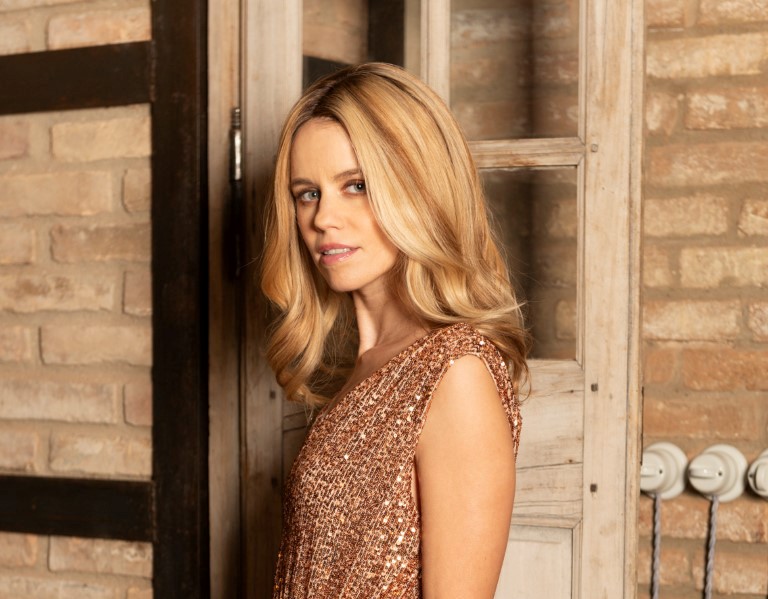
The Essential Elements Of Careful And Highly Professional Hair Processing
- The use of the highest quality of virgin Remy Hair in perfect state of health with intact and aligned cuticles.
- The use of delicate products that respect the capillary structure of the hair in every phase of processing including depigmentation and dyeing.
- The correct processing and appropriate knotting of the hair to the cap.
- The use of materials and accessories exclusively of the finest quality.

Having a sound knowledge of wig production will allow you to make a wise and educated choice when it comes to buying a wig. If you want a natural result, imperceptible to the untrained eye and touch; if you would like a longer lasting wig that will remain beautiful, soft and shiny; we advise you to opt for a wig manufacturer that uses hair of the highest quality: whole Remy Hair with intact cuticle.
